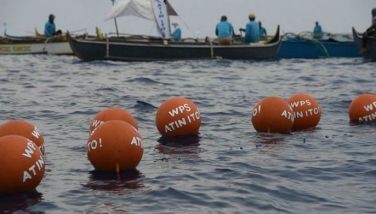Visayas now Phl’s typhoon belt
MANILA, Philippines - The country’s typhoon belt has shifted from northern Luzon to the Visayas, an official of the Climate Change Commission (CCC) has acknowledged.
In a training workshop on “Environmental Leadership in Climate Change Adaptation†held in Los Baños last year, CCC Commissioner Naderev Sano noted the changing pattern of typhoon occurrences in the country from northern Luzon to the Visayas, including southern Luzon, Masbate, Romblon, Boracay, Iloilo and northern Palawan.
The Visayas, along with outlying areas, is again in the path of the first low-pressure area to hit the country this year. The low-pressure area will be named Agaton if it intensifies into a tropical depression.
Last Nov. 8 Super Typhoon Yolanda cut a wide swath of devastation in Eastern Visayas, particularly in Leyte and Samar, the two main islands. Other regions near the Visayas and northeastern Mindanao, Bicol and Palawan were also affected.
Sano noted that while the frequency – about 20 typhoons a year – remains the same, there are now five to six typhoons that are stronger, with wind speeds of about 220 kilometers per hour, compared to two or three strong storms previously.
“And they bring a lot of rain,†he said, citing a Philippine Atmospheric, Geophysical, and Astronomical Services Administration (PAGASA) projection that the rainy season will be up to 60 percent wetter while the dry season will be 60 percent dryer.
“These are characteristics of climate change as warmer oceans generate stronger storms. Ocean temperatures of less than 27 degrees Celsius would not generate a typhoon but the hotter it is, the higher the probability of typhoon,†he said.
He said the Western Pacific Ocean, where most typhoons come from, and even the West Philippine Sea, average 32 degrees Celsius, so there is a larger possibility of more storms.
Unlikely to develop into a storm
PAGASA weather forecaster Glaiza Escullar said in an interview over ANC that the low-pressure area is not expected to develop into a storm because of the northeast monsoon.
As of 4 p.m. yesterday, PAGASA said the low-pressure area was estimated at 250 kilometers southeast of General Santos City.
PAGASA said the Visayas and Mindanao would experience cloudy skies with moderate to heavy rains and thunderstorms, which may trigger flashfloods and landslides.
Cagayan Valley, Calabarzon and the Bicol region and the province of Aurora will have cloudy skies with light rains. Metro Manila and the rest of Luzon will be partly cloudy to cloudy with isolated light rains.
Moderate to strong winds blowing from the northeast will prevail over Luzon and the Visayas and coming from the northeast to north over Mindanao. The coastal waters throughout the archipelago will be moderate to rough.
PAGASA said the weather system would also bring cloudy skies with moderate to heavy rains and thunderstorms over Mindanao, Leyte provinces, Negros provinces and Bohol, and may trigger flashfloods and landslides.
Residents were advised to take all the necessary precautionary measures.
Rescue operations
Meanwhile, the Philippine Coast Guard (PCG) has coordinated with the Regional Disaster Risk Reduction and Management Council on the possible rescue operations in areas that would be affected by the low-pressure area.
PCG commandant Vice Admiral Rodolfo Isorena instructed their field officers to remain vigilant.
Operators of small vessels, motorboats and fishing boats have been advised not to sail in the southeastern and eastern section of the country, where the sea condition is expected to be rough.
Isorena also reminded boat operators with open deck and fishermen in the areas that are not directly affected by the weather disturbance, to also monitor the weather.
He also advised them to check their safety equipment such as life jackets and life rings before venturing into the water. With Pia Lee-Brago, Evelyn Macairan
- Latest
- Trending

























